Mediterranean style Strained Yogurt is the base of many mezes, dips and spreads. In my native country of Albania, we call strained yogurt Salcë Kosi. In other countries strained yogurt with salt is known as labneh. Depending on how much you strain the yogurt you can make Greek yogurt or a a thicker spreadable cheese like substance.
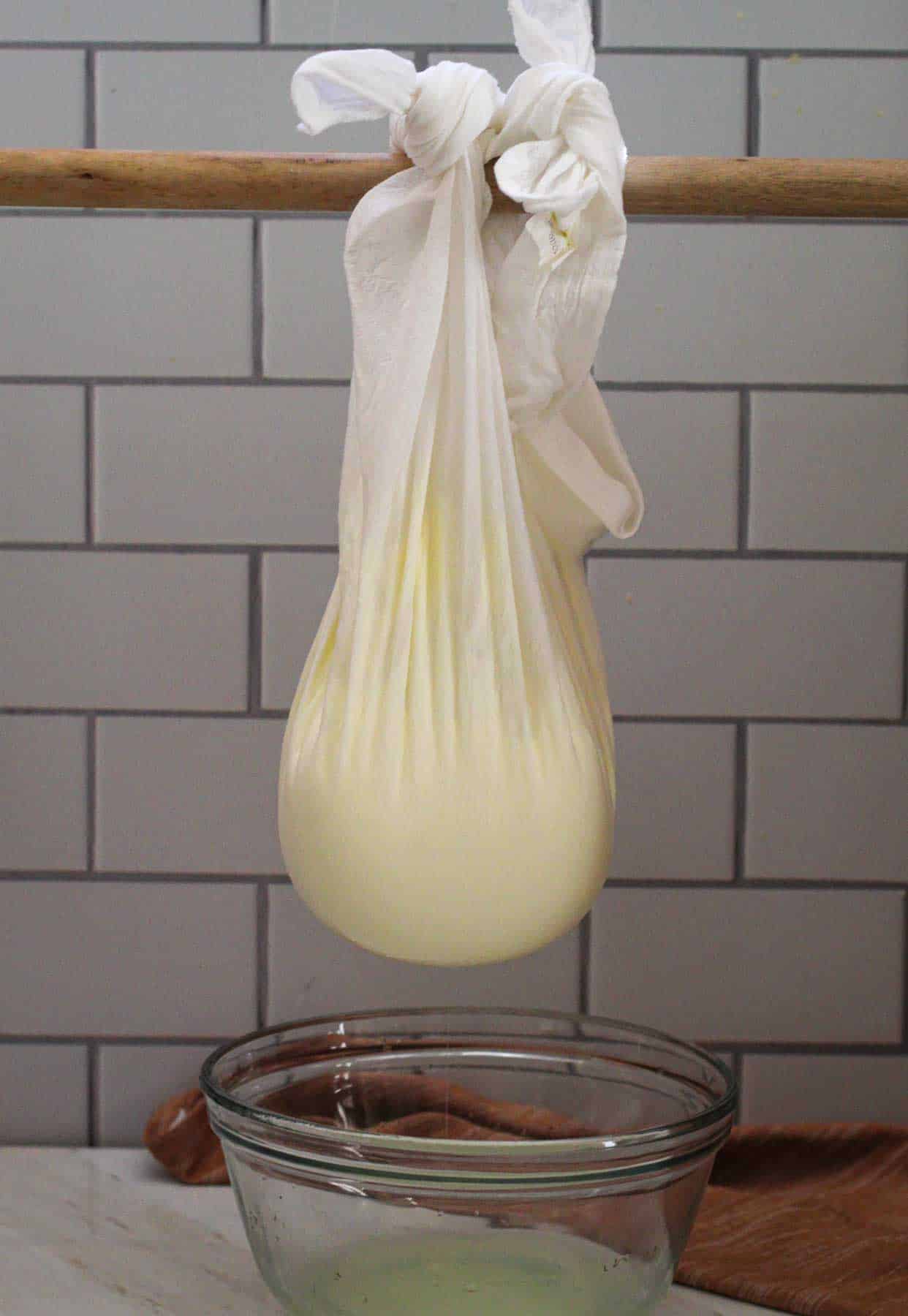
Why Do You Strain Yogurt?
Nowadays we strain yogurt to make dips, appetizers, spreads and for its health benefits like consuming more protein in a smaller serving. The strained yogurt is cremier, spreadable cheese like substance that has so many uses.
If I look back at how my grandparents used this product, yes they made dips and mezes with it and also consumed in a similar fashion to sour cream or cream cheese, but their main reason was not to waste the extra yogurt they had that day. Mediterranean home cooked cuisine is a sustainable way of cooking where you rotate through ingredients in a non-processed way, always using what you have at home. This creates minimal food waste.
One of my grandmas even used to tell me stories of how when she was little, they used to visit family that lived up in the mountains and had sheep. When they would return to the city, they used to bring containers made out of animal skin full of dairy products and dried meats to store in the cellar for winter time. One of the dairy products she mentioned was the strained yogurt, but not sure how they managed to keep it fresh.
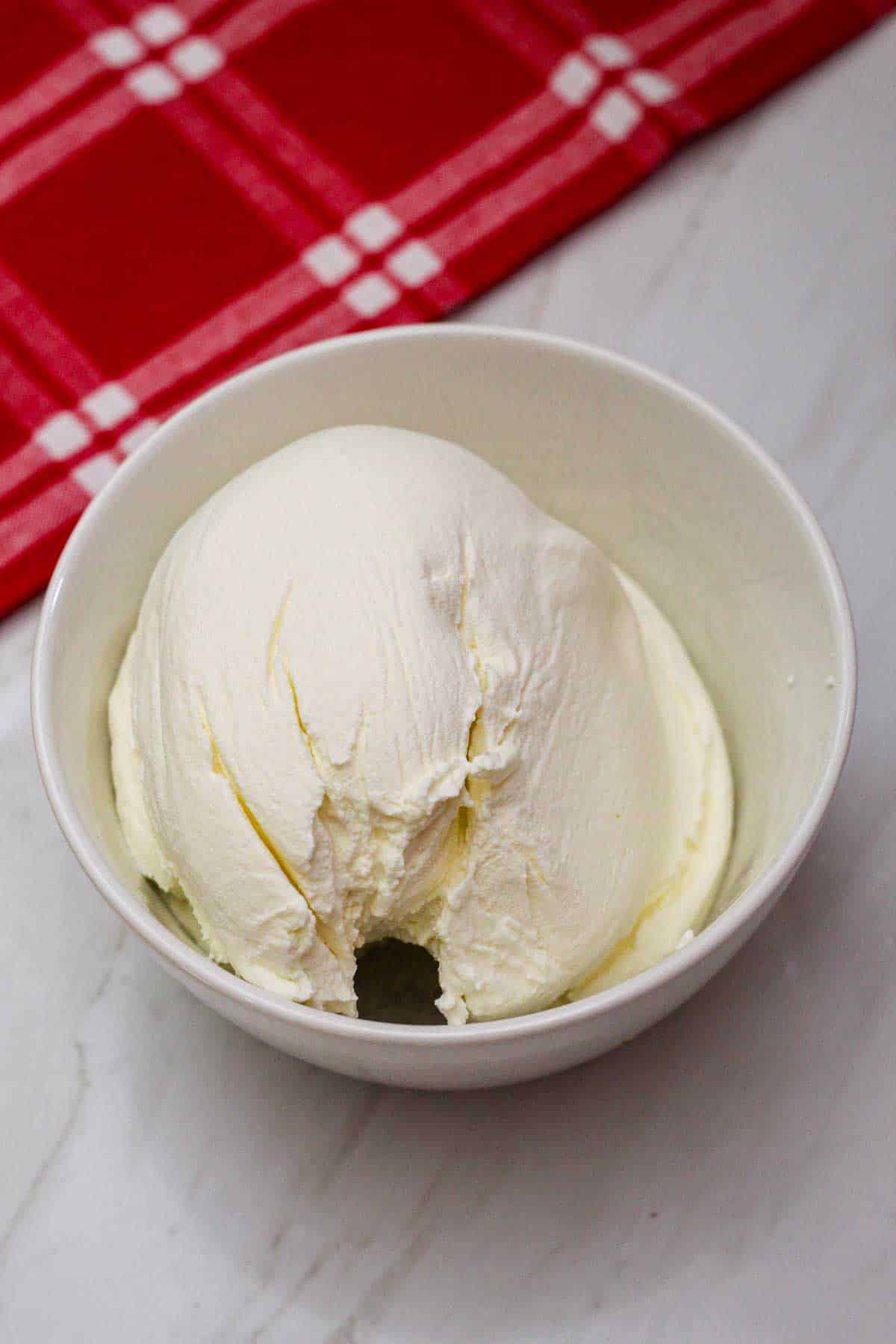
Process of Straining Yogurt at Home
When growing up in Albania, we bought the milk unpasteurized then boiled it at home. We made our own yogurt everyday. Then when we had excess yogurt or were planning for any get together, we strained the yogurt to create a spreadable sauce similar to sour cream consistency called Salcë Kosi.
When I moved to US over 20 years ago, I tried to buy strained yogurt in the stores and couldn’t find any until I found Greek Yogurt. I was like great, this is close, I can just pour this on a cheese cloth over a colander and it’ll be just right.
So below I would like to share my method of straining yogurt.
- Buy whole milk yogurt or make your own yogurt. Decide if you want to make Greek Yogurt, a sauce for dips or a spreadable cheese like substance.
- Use a cheesecloth or a muslin cloth. Don’t use a kitchen towel or thick cloth because it will absorb part of the yogurt, not just strain it. You might need to do a little trial and error with different cloth to see which one works for you. My favorite is a flour sack muslin towel. I use a brand new one and after washing it, I only use that one for straining yogurt.
- Pour yogurt on muslin cloth, tie it and hang it over a container. There will be a light green water dripping over the container (this is whey or hirra). Let the yogurt strain until you see no more water dripping. This step can take about 1 hour or so.
- Remove the muslin from the rod where you were hanging it, then place it over a colander that is supported by a glass container. Store it in the refrigerator. Next morning you should have a spreadable cheese like substance.
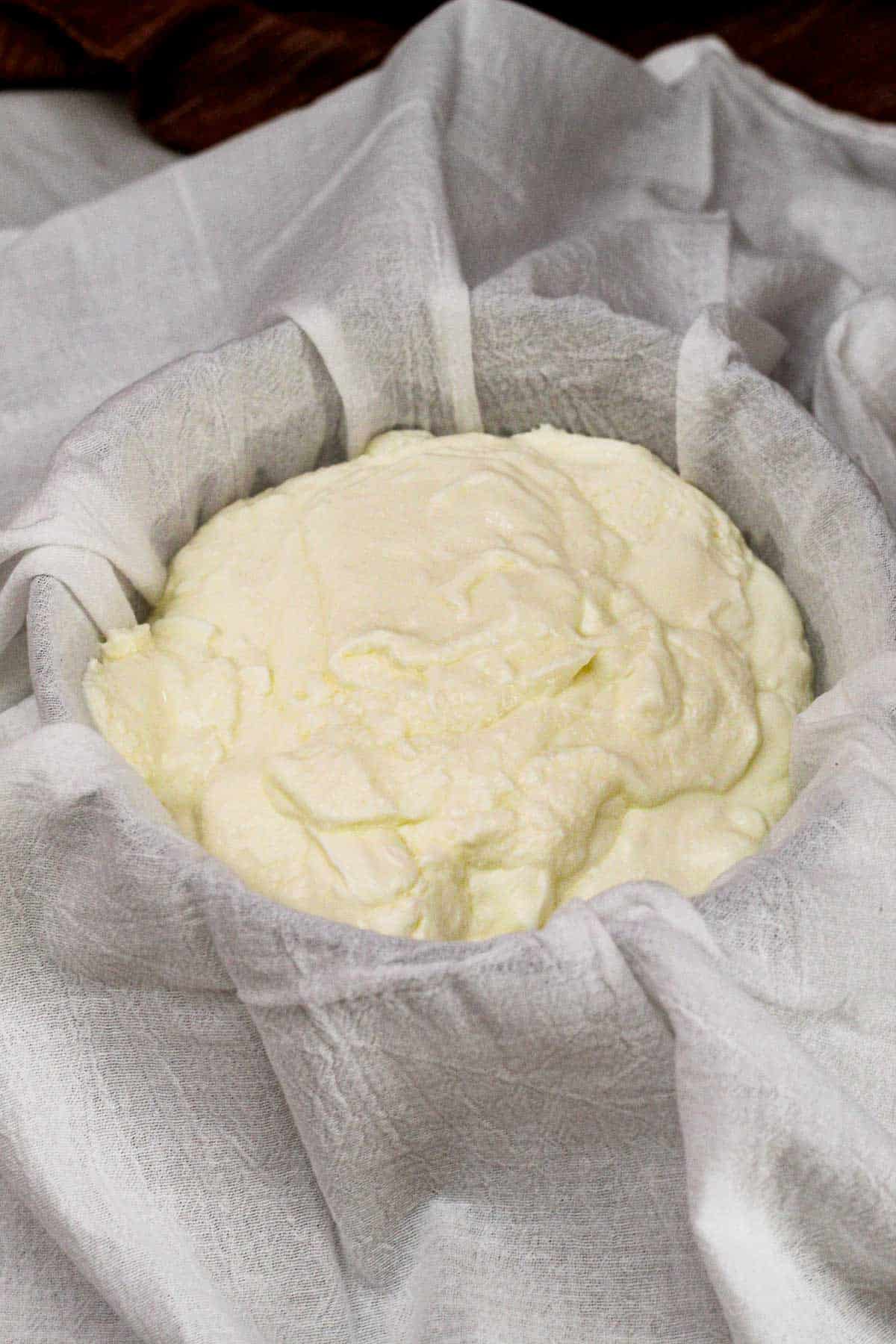
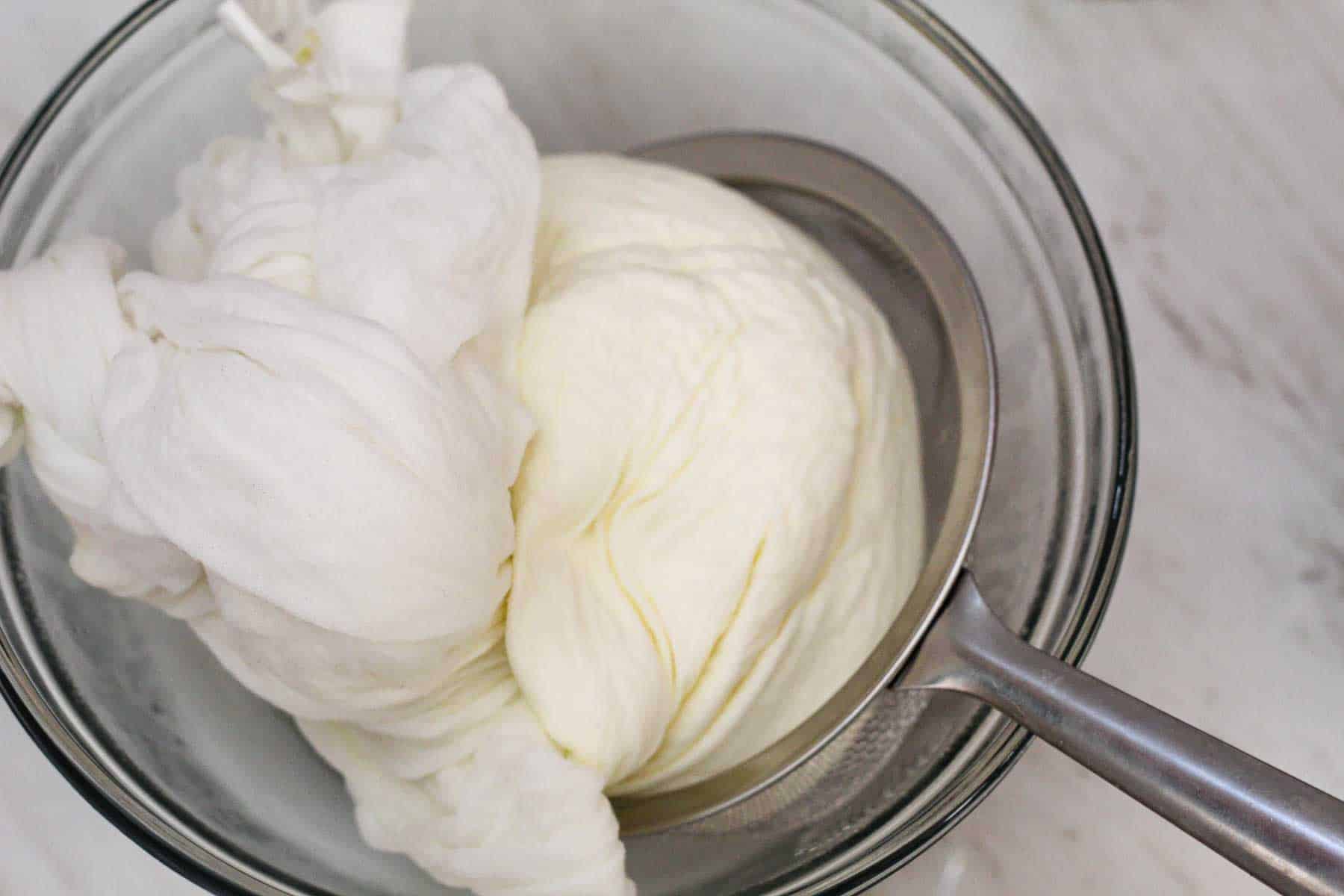
How Do You Serve Strained Yogurt?
If you strain yogurt just to make Greek yogurt, then you can serve that with fruits for breakfast, parfaits and so many other uses this yogurt is famous for.
If you strain yogurt into a thick sauce or spreadable cheese like substance, then you can use it as follows.
- Mezes and dip – strained yogurt (salce kosi or labneh) makes for amazing dips with olive oil, olives, herbs, salt. One example is this dip my mom made for New Years Eve celebrations in my house. You mix strained yogurt, garlic, salt, olive oil and walnuts, yumm:)).
- Spreads that can be savory or sweet. They’re great over sourdough bread.
- Use instead of sour cream in recipes.
See below some examples of how I used the strained yogurt I made just before the holidays.
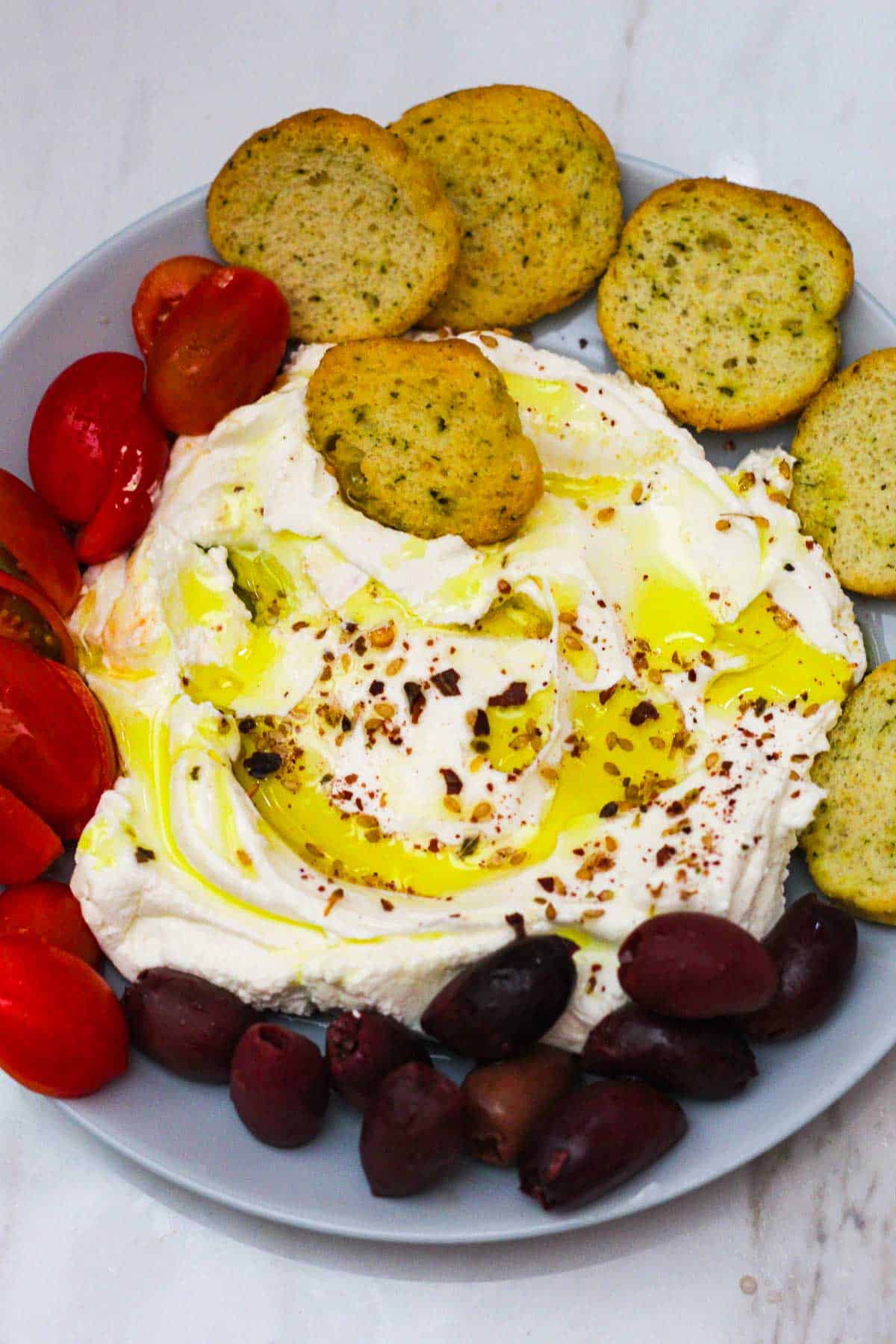
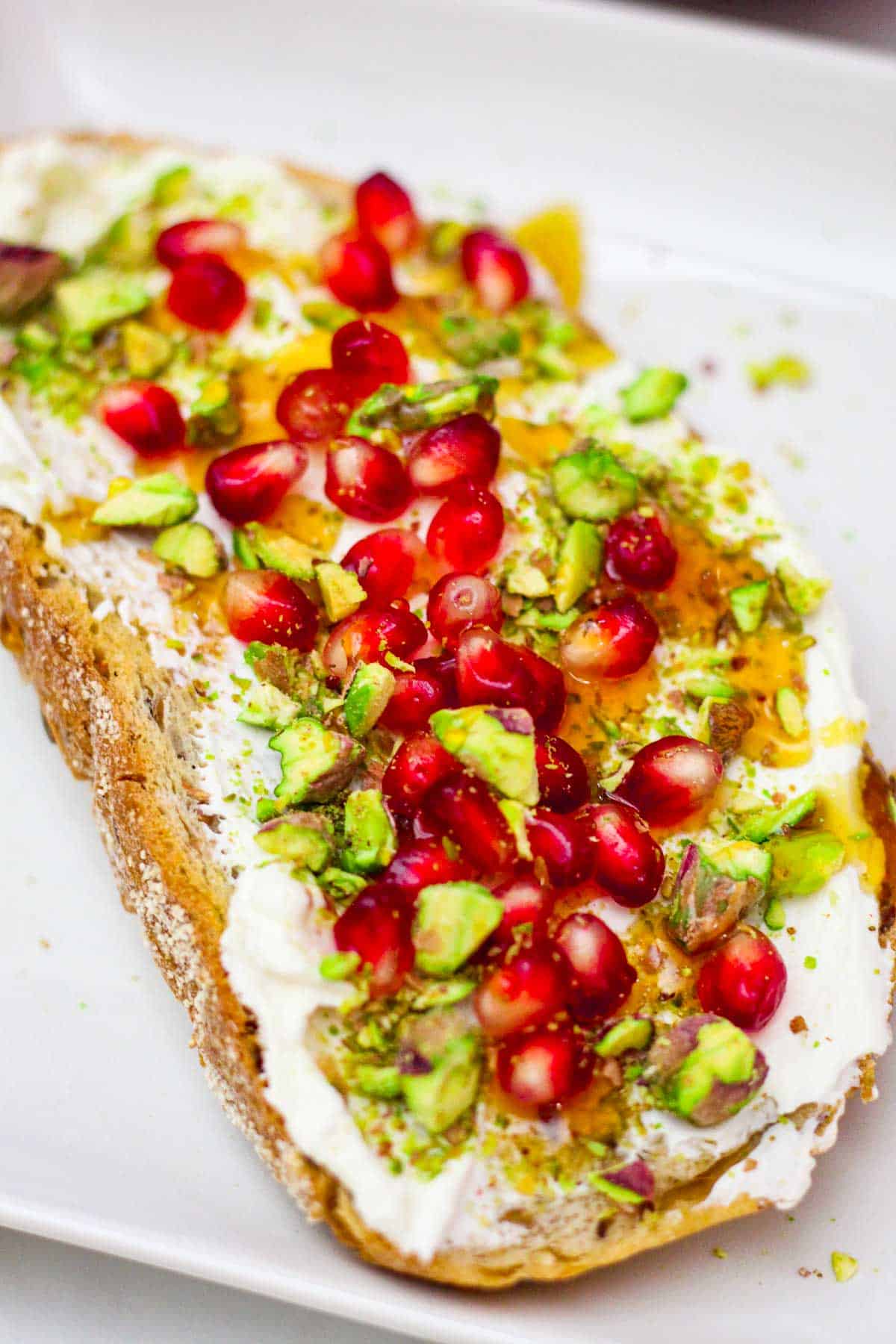
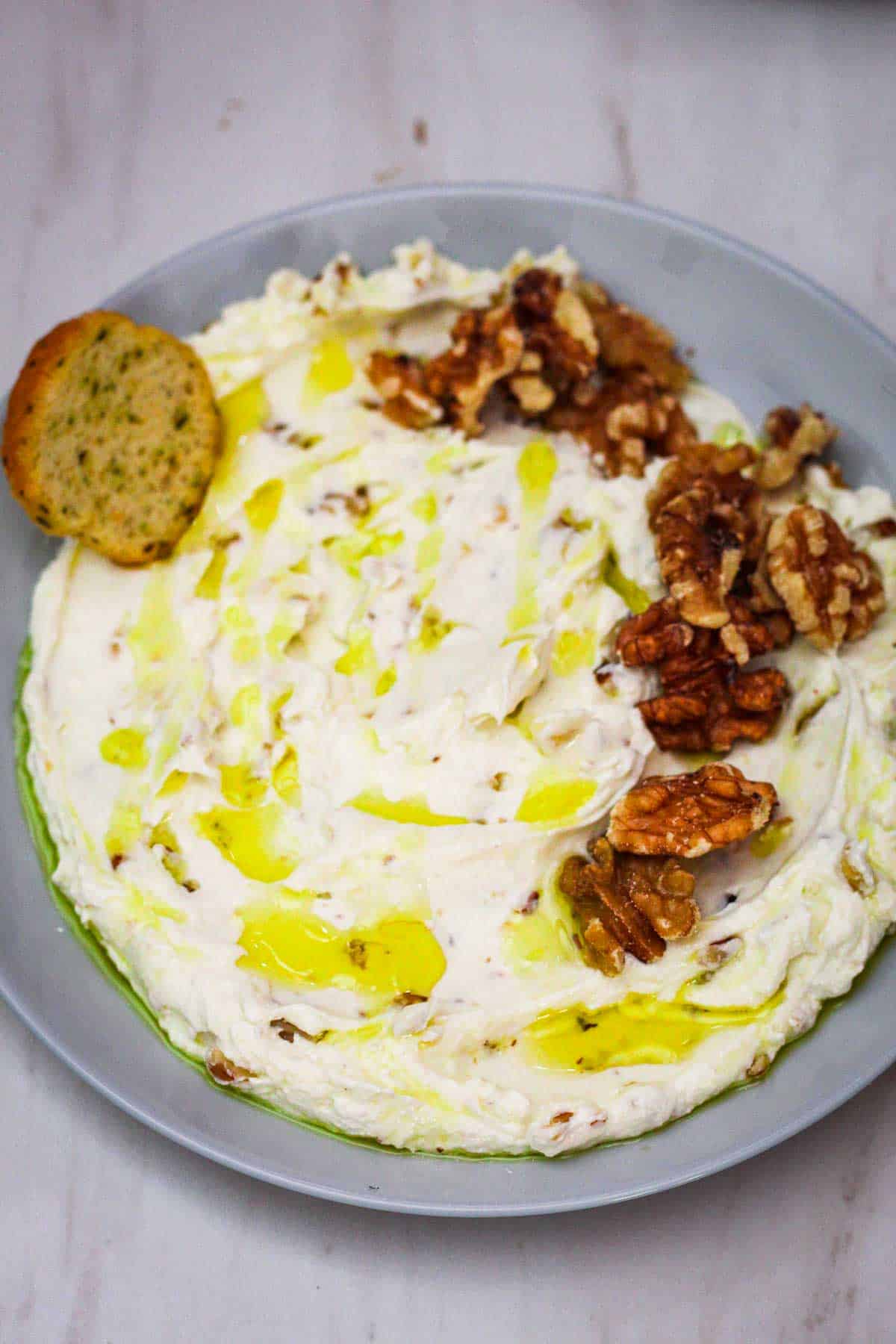
Pro-Tip – Straining time will vary on two things: type of cloth you use and if you just place the hanging cloth to strain using its own weight or straight to the colander.
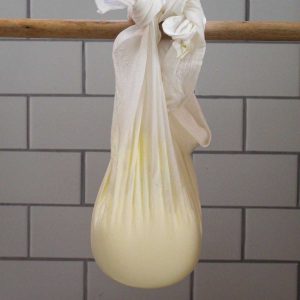
Homemade Strained Yogurt (Salcë Kosi)
Equipment
- 1 flour sack cloth muslin cloth or cotton linen is best, if using cheesecloth, double up
- 1 mesh colander
Ingredients
- 4 lbs whole milk yogurt
- 0.5 tsp salt optional
Instructions
- Place flour sack towel over a glass bowl. The towel I used is 28×29 inches. Please note that it is not a regular kitchen towel but a muslin type fabric as seen in the pictures and video.
- If you want to add salt to yogurt, this is the time to do it. I skip the salt personally. Scoop or pour yogurt right in the middle of the flour sack or cheesecloth. If using cheesecloth, you'll need to use at least 4 layers.
- Grab the 4 sides of the flour sack, tie them in knots and hang the flour sack with yogurt in it for about 1 hour over a glass container so whey can strain out of the yogurt. You'll see a greenish liquid strain through the cloth. If you see a white liquid straining, it means the cloth you're using is too thin, you'll need to double or triple the layers.
- After about an hour or so of straining this way (yogurt's own weight helps strain really fast), you can check consistency and it will be really close to Greek yogurt at this point. You can pour part or all of it in a container and refrigerate for your own Greek yogurt uses.
- If you're looking to get labneh, spreadable cheese like or salcë kosi, then don't untie the knots of the flour sack, rotate the flour sack around the knot and place it over a colander being supported by a glass container. The volume of the flour sack with yogurt should have gone down a lot during the hour it was straining so it should fit now over the colander or strainer.
- Place the whole glass container/colanger and flour sack with yogurt in the refrigerator overnight. The yogurt will strain into a soft cheese like substance and the next morning you can remove from flour sack and place it in its own container for use as you see fit:)). Enjoy!
Notes
- Note – since the uses of strained yogurt vary so much, so will the amount of servings depending on what you’re using it for.
- The nutrition values for strained yogurt are a bit hard to calculate, so this is just an estimate.
- Straining time will depend on how much yogurt you’re straining at a time, type of fabric you’re using to strain and if you hang it initially or just straight place over colander. Since this is not a fixed formula, do a little check every few hours to check on consistency the first time you’re making strained yogurt. You’ll fine tune it to your liking:).
- Always prepare more strained yogurt than you need for your recipe, it’s better to have extra than come up short since it takes time to strain.
Nutrition Label
Nutrition
I personally don’t add salt before straining but I think I’m in the minority. Some people add salt, some add salt and few drops of lemon juice. I prefer purely straining the yogurt then if I’m making a dip with it, I add salt and other ingredients to make it a dip. However, I also love using the strained yogurt as a spread over bread with fruits and honey, so that’s why I don’t add salt before hand.
Yes you can actually! In my native language we call that greenish liquid that strains from the yogurt ‘hirra’. In English it’s whey or acid whey more specifically. While I’m used to personally just drink it for its health benefit, I have read that people incorporate it from anything like smoothies to baked goods, even in brine. So don’t throw away this product and feel free to experiment a little on how you can use it.
If you’d like to save this recipe for later, please save the below image to your boards in Pinterest. Please let me know if you have any questions in comments or feel free to tag me in social media with what you made with this strained yogurt. Thank you!!
Instagram: mediterranean_latin_love or Facebook: Mediterranean Latin Love Affair.
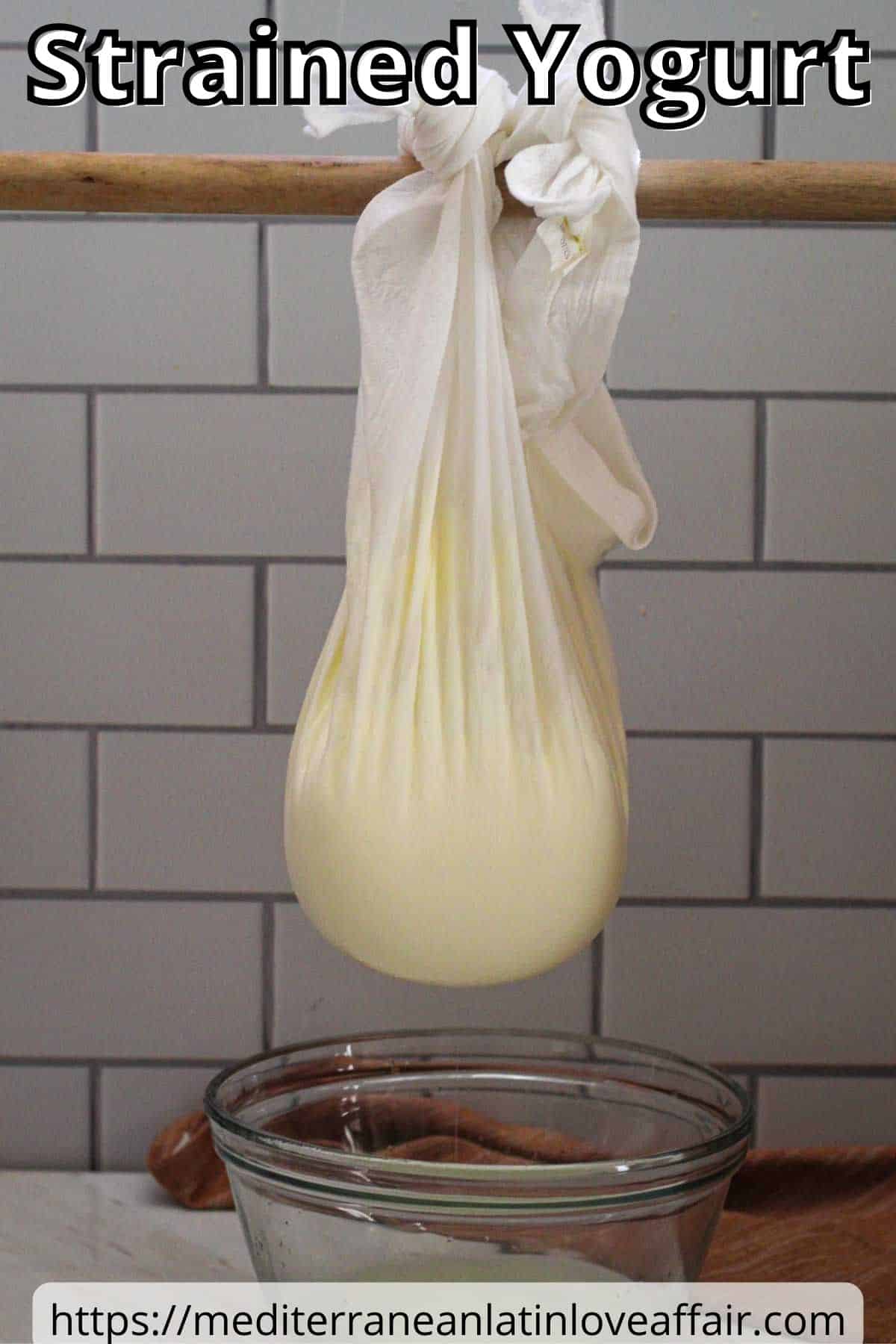
More Mediterranean Recipes
- Red Pepper Dip with Feta Cheese
- Baked Mint Meatballs (when fried, these meatballs go hand in hand with a strained yogurt dip with garlic, evoo and salt).
- Marinated Red Peppers
- Marinated Cherry Tomatoes
- Balkan Red Pepper Dip (Ajvar)


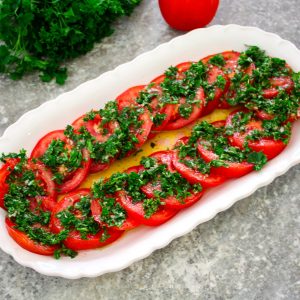

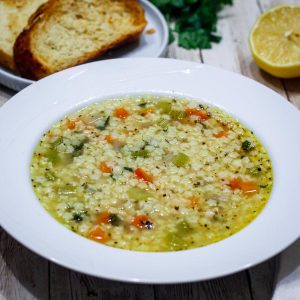

Leave a Reply